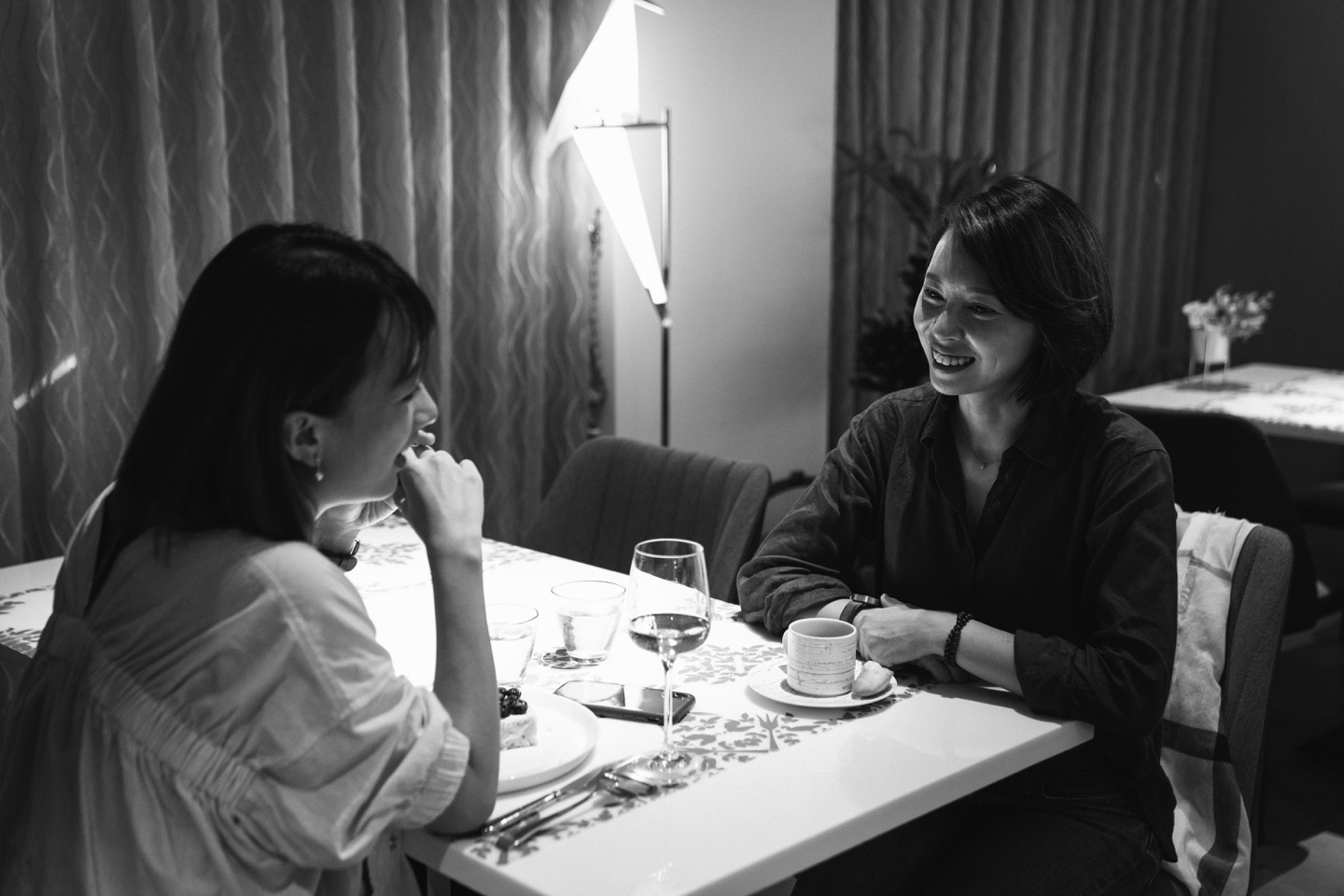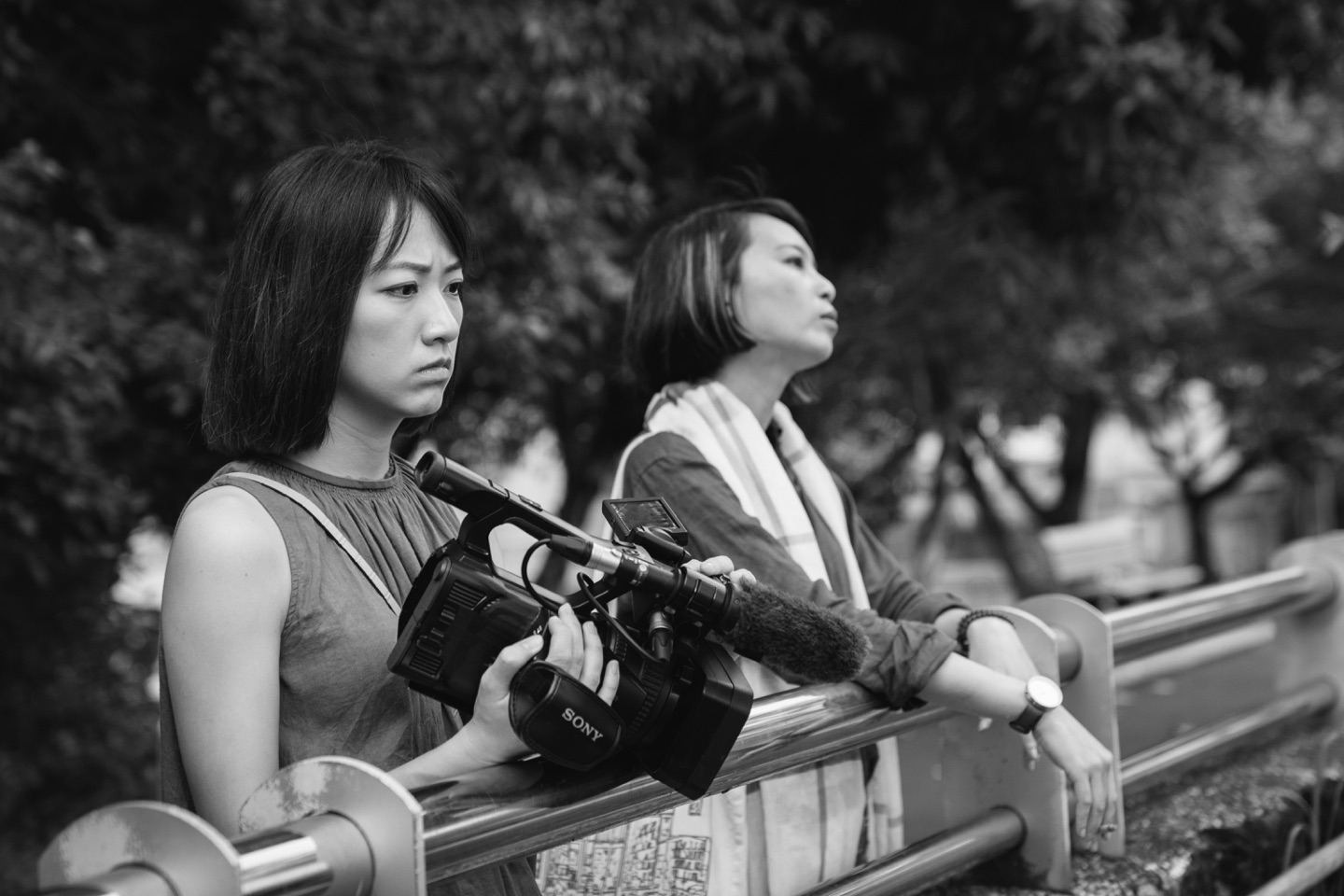by Brian Hioe
語言:
English
Photo courtesy of Talking Light Films
This is a No Man is an Island film review written in collaboration with Cinema Escapist as part of coverage of the 2023 Toronto International Film Festival. Keep an eye out for more!
SHE’S TALKING IN ISLAND is an intriguing, if didactic and likely polarizing film.
The movie consists entirely of the conversation across a day and night between two unnamed women, one a documentary filmmaker and the other a high school student. In this, one can see clear inspiration from “two-hander” films that focus on the conversation between two characters, such as the Before Sunrise trilogy and My Dinner with Andre.
Sometime in the late 2010s, the two protagonists meet after the high schooler jumps into traffic and is nearly hit by the documentary filmmaker’s car. The high school girl feels suicidal after a break-up.
Consequently, the older woman takes it upon herself to talk with the high schooler and try to convince her that there is more to life. In this, the filmmaker expounds her philosophical view on life, frequently citing artists, philosophers, novelists, and filmmakers.
Certainly, much of the film comes off like a Socratic dialogue. The documentary filmmaker has a seemingly photographic memory for quotes and facts, while the high schooler plays the role of her less experienced, less well-read interlocutor. The juxtaposition between the two is clear in that the Gen Z high school girl frequently resorts to looking up the authors and artists brought up by the documentary filmmaker on Wikipedia and Google. At other points, the filmmaker speaks from personal experience about her own past loves to the high school girl, who is seemingly hung up on her first love.

Photo courtesy of Talking Light Films
Much of the movie is set in the filmmaker’s car, in a move that may be a deliberate callback to Abbas Kiarostami’s Taste of Cherry—probably the most influential work ever made when it comes to films set mostly in cars. Later on, the filmmaker takes the high schooler along on an interview with a novelist, as part of her work, and later takes her to a coffee shop and bookstore.
As the film goes on, the two protagonists clearly develop a stronger rapport with each other. But the stylization of the movie may be divisive, with long blocks of text appearing as captions, and title cards referencing what time of the day it is. Part of the film’s tension comes from the fact that a typhoon is approaching Taipei. At one point, in an experimental gesture, sound fades out of the film altogether and the movie becomes a silent car ride.
Underlying the plot of She’s Talking in Island may be the attempt to have a cross-generational dialogue between Millennials and members of Gen Z. The filmmaker is clearly a Millennial, part of the generation in Taiwan referred to as the “Natural Independence” generation— whose youthful experiences were strongly colored by the 2014 Sunflower Movement.
That one of the documentary filmmaker’s exes is a former student movement leader attests to a likely historical background of youth activism. The Sunflower Movement also comes up in the high schooler’s recollection of the past, but she appears to have been a middle or high school student during this time, and does not seem to have a very clear understanding of the movement.
But what is most telling of all is how the documentary filmmakers’s artistic and cultural influences are all works beloved by the Sunflower generation. For those who come from a similar background, the effect comes off sometimes as a bit heavy-handed, in that the movie is a bit direct with the citations.

Photo courtesy of Talking Light Films
And perhaps therein lies the narrative flaw of She Speaks in Island, that the movie does too much telling and not enough showing. The film seems to largely have a closed meaning, one that doesn’t seem open to multiple interpretations.
Ultimately, the movie centers around a bildungsroman for the high schooler, though She Speaks in Island is clearly told from the perspective of the documentary filmmaker. In the end, this undercuts the high schooler’s development as a unique character. One does not have a strong sense that the filmmaker changes through her encounter with the younger woman either, even if part of the implication of the movie is that the two are parallel characters—if not the same character.
Still, She’s Talking in Island serves as a document of the perspective of the Sunflower generation. This is particularly the case regarding the Sunflower generation’s perception of itself as it ages and passes the baton down to a younger generation whose growth did not take place in the shadow of a movement that rocked the whole of Taiwanese society. For this alone, the film may be worth a view.



